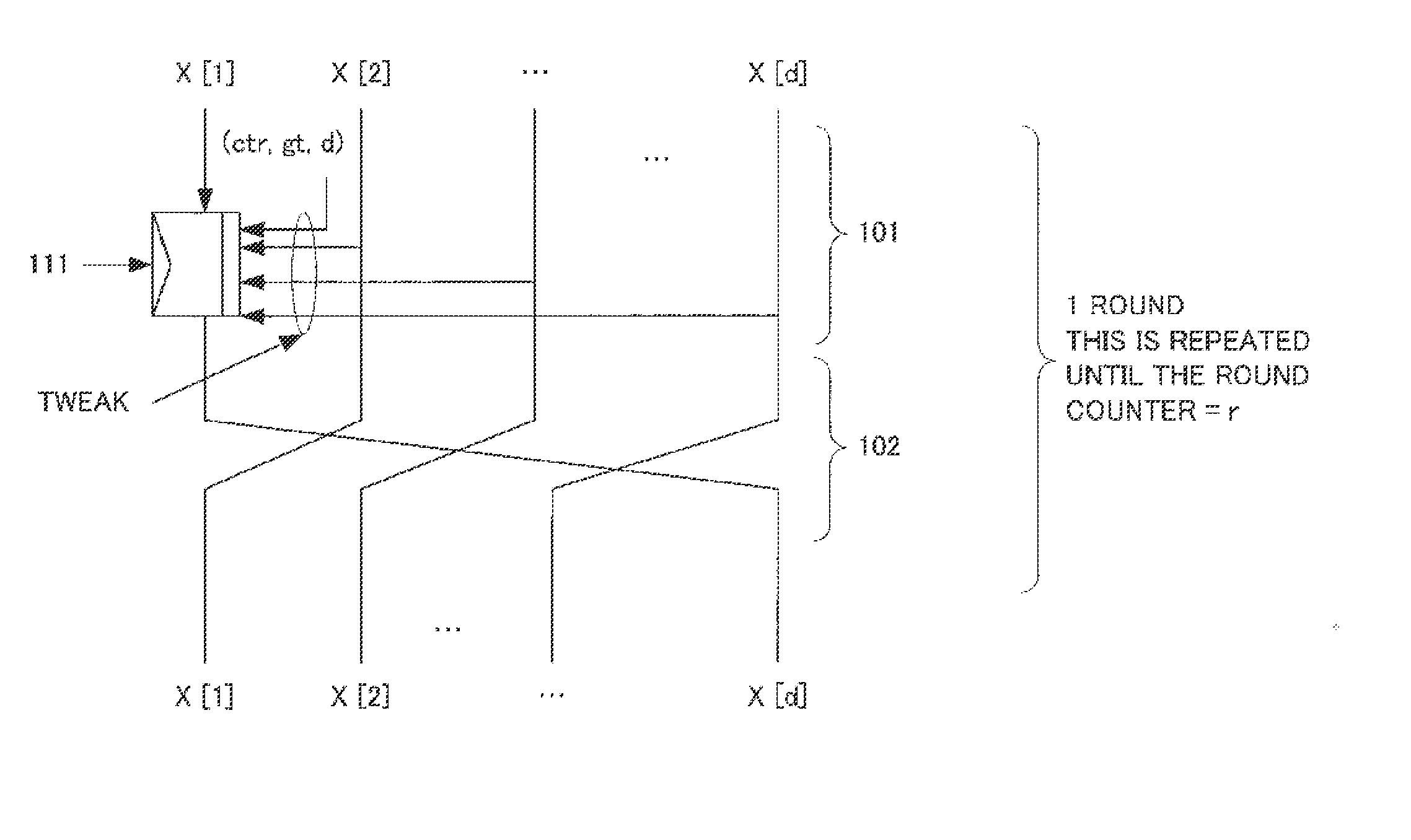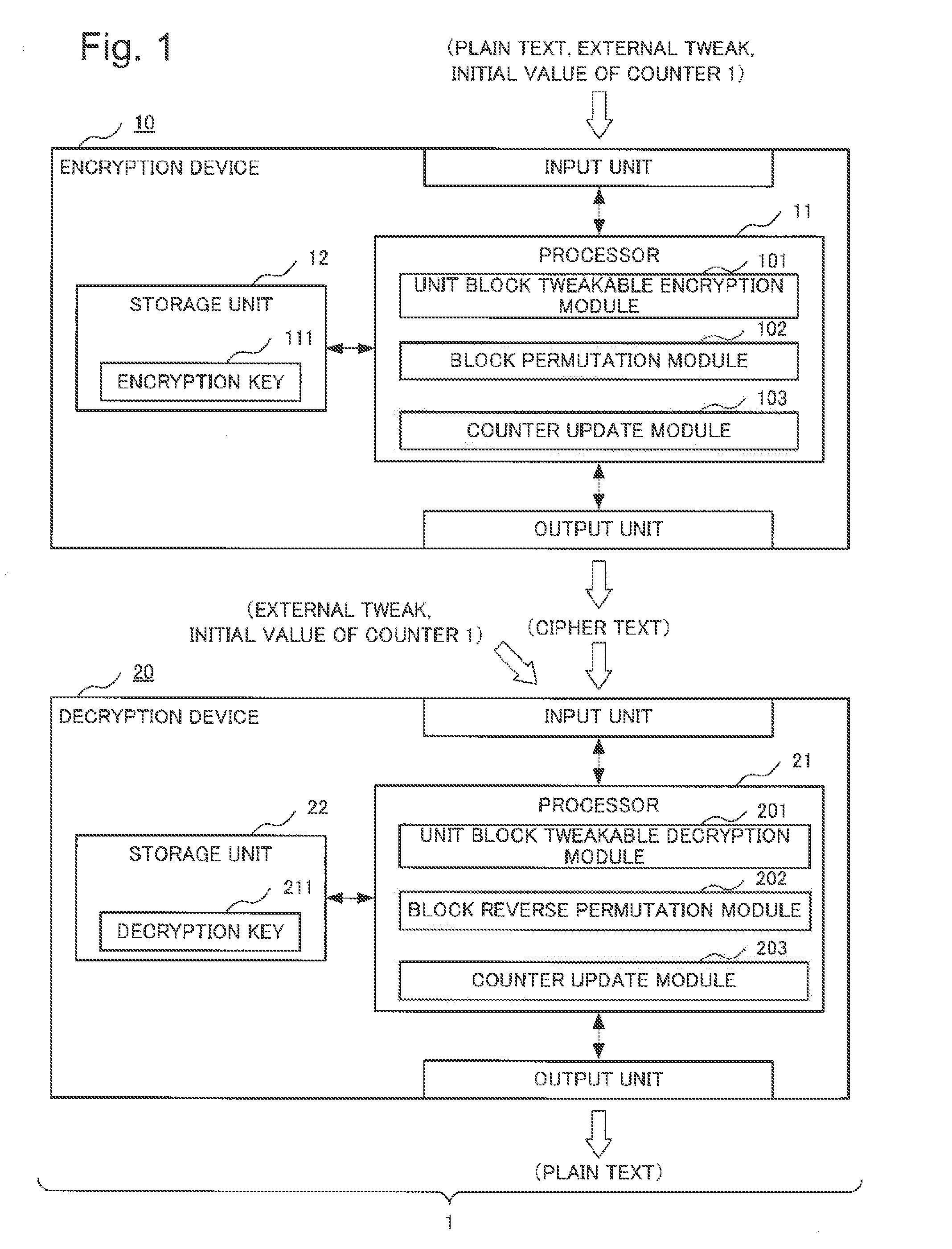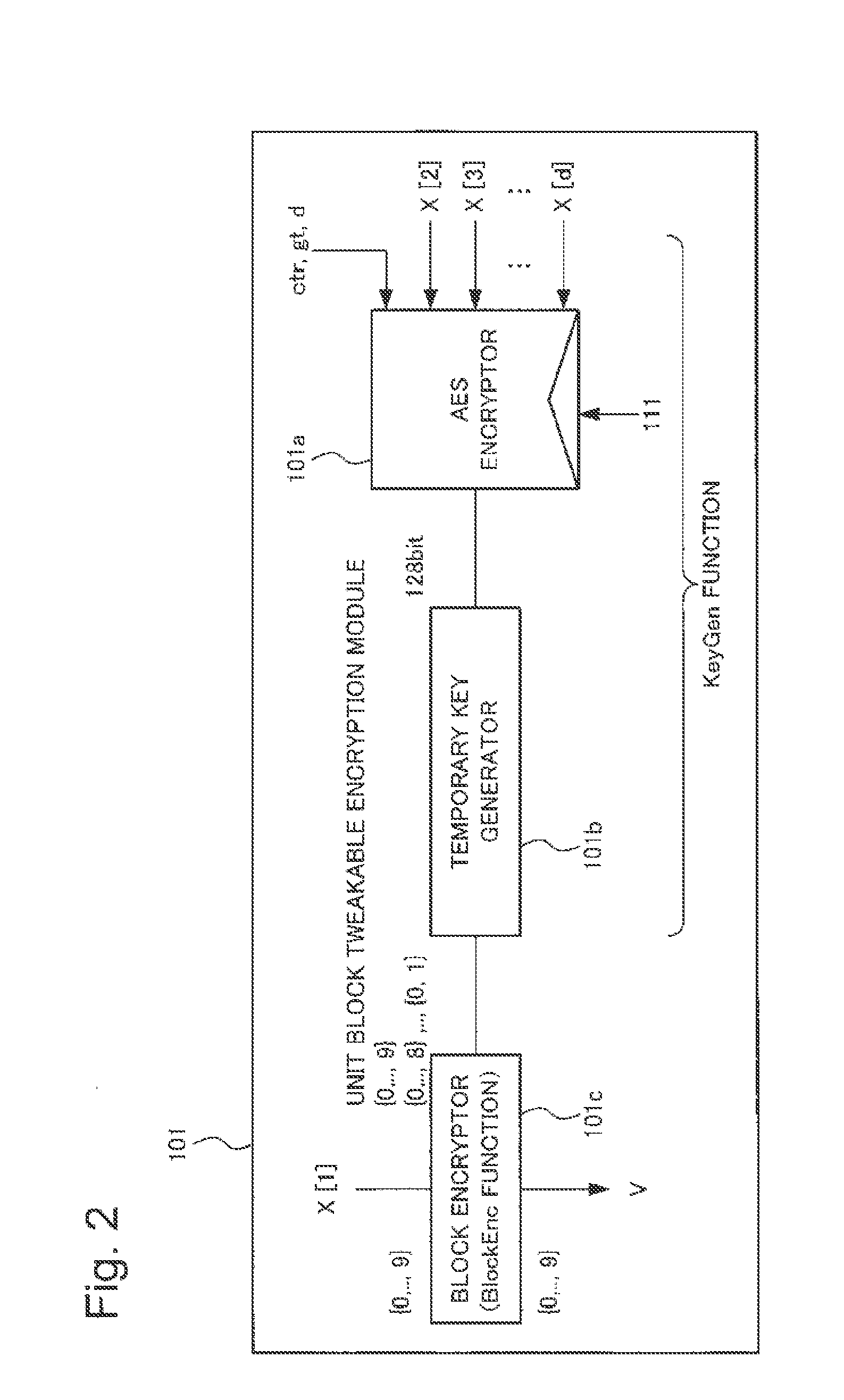Device, method, and program for format-preserving encryption, and device, method, and program for decryption
a format-preserving encryption and program technology, applied in the field of format-preserving encryption devices, methods, and programs, can solve the problems of large amount of processing, inability to process data other than the defined format, and difficulty in applying knuth shuffle to a message space of more than 10,000 in size, so as to achieve efficient and secure encryption/decryption, the effect of superiority
- Summary
- Abstract
- Description
- Claims
- Application Information
AI Technical Summary
Benefits of technology
Problems solved by technology
Method used
Image
Examples
embodiment 1
Expansion of Embodiment 1
[0104]Various expansions of the above-described exemplary embodiment will be considered without changing the spirit thereof. The following will describe such expansions.
When a value of a is large to a certain extent in a d-digit message space in base a, utilizing Knuth Shuffle as actual processing of the block encryptor 101c, that is, BlockEnc, is inefficient and unpractical.
[0105]In such a case, for example, a method described in NPL10 can be used. Further, particularly, when a=232, 248, and the like, methods that use small block sizes may be utilized among existing block ciphers, such as KATAN described in NPL11, RC5 described in NPL12, and SEA described in NPL13.
[0106]Even in such a case, processing of the block encryptor 101c (BlockEnc) still utilizes the output from the temporary key generator 101b (a temporary key DK that is output from KeyGen). However, the output from the AES encryptor 101a is required to be converted to a key in a format and distrib...
embodiment 2
Expansion of Embodiment 2
[0108]In a d-digit message space in base a, a for each digit may be different in some cases. Such a case corresponds to, for example, a case of dealing with data such as “a combination of binary and decimal” as described in Background Art. A value of a of the i-th digit (i=1, . . . , d) is represented as a(i). A space that X[1] may take in the j-th round (j=1, . . . , d) is indicated in the following Formula 15.
Za(j−1 mod d)+1) [Formula 15]
[0109]In such a case, an array size of Knuth Shuffle and a block size of a block cipher that are used in processing of the block encryptor 101c in the j-th round become equal to those indicated in Formula 15. In other words, since the processing of the block encryptor 101c cyclically changes for each round, processing of the AES encryptor 101a and the temporary key generator 101b cyclically changes accordingly.
[0110]Further, even in a case that a(i) of respective digits are not the same, when the number of rounds r is int...
PUM
 Login to View More
Login to View More Abstract
Description
Claims
Application Information
 Login to View More
Login to View More - R&D
- Intellectual Property
- Life Sciences
- Materials
- Tech Scout
- Unparalleled Data Quality
- Higher Quality Content
- 60% Fewer Hallucinations
Browse by: Latest US Patents, China's latest patents, Technical Efficacy Thesaurus, Application Domain, Technology Topic, Popular Technical Reports.
© 2025 PatSnap. All rights reserved.Legal|Privacy policy|Modern Slavery Act Transparency Statement|Sitemap|About US| Contact US: help@patsnap.com



